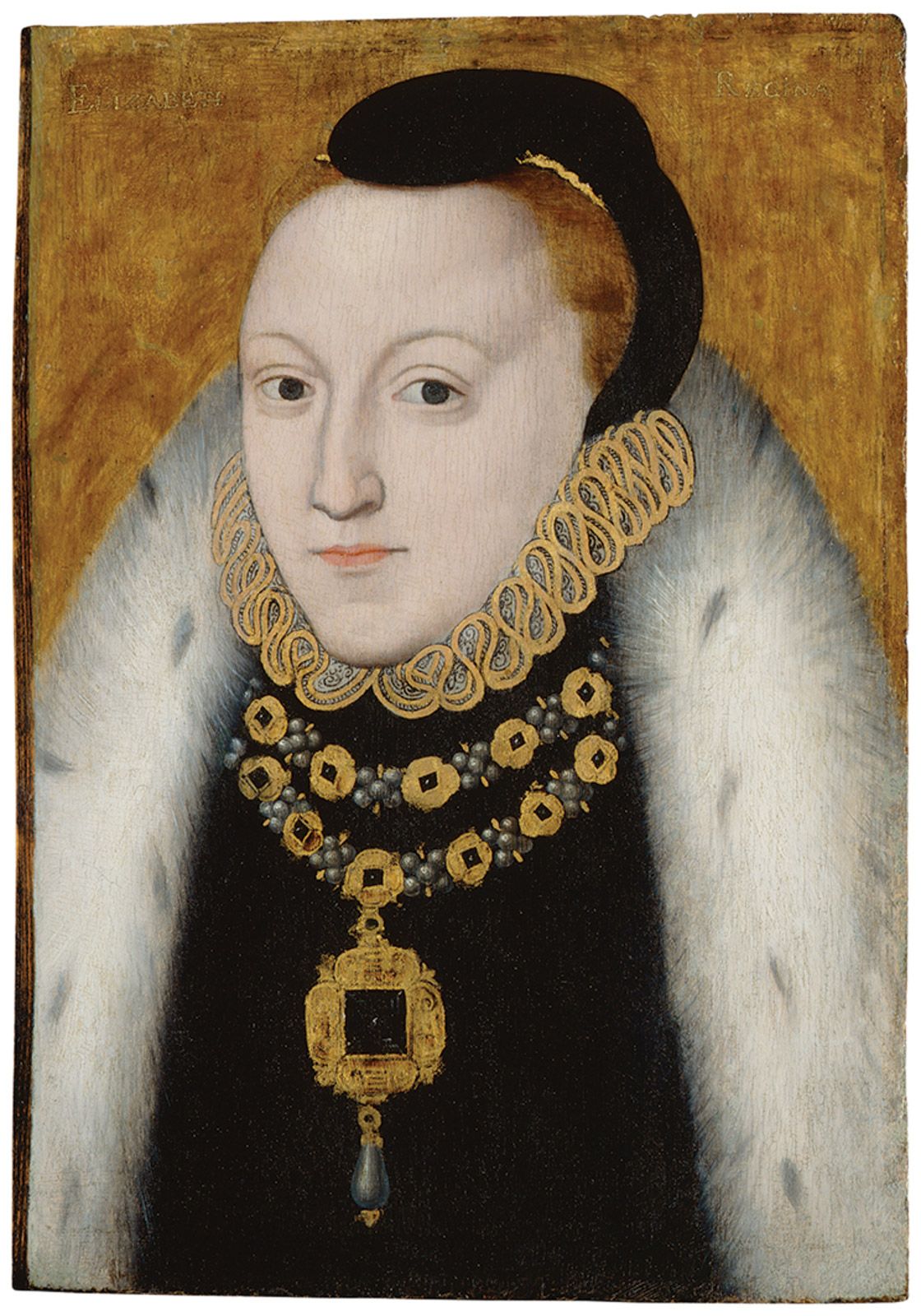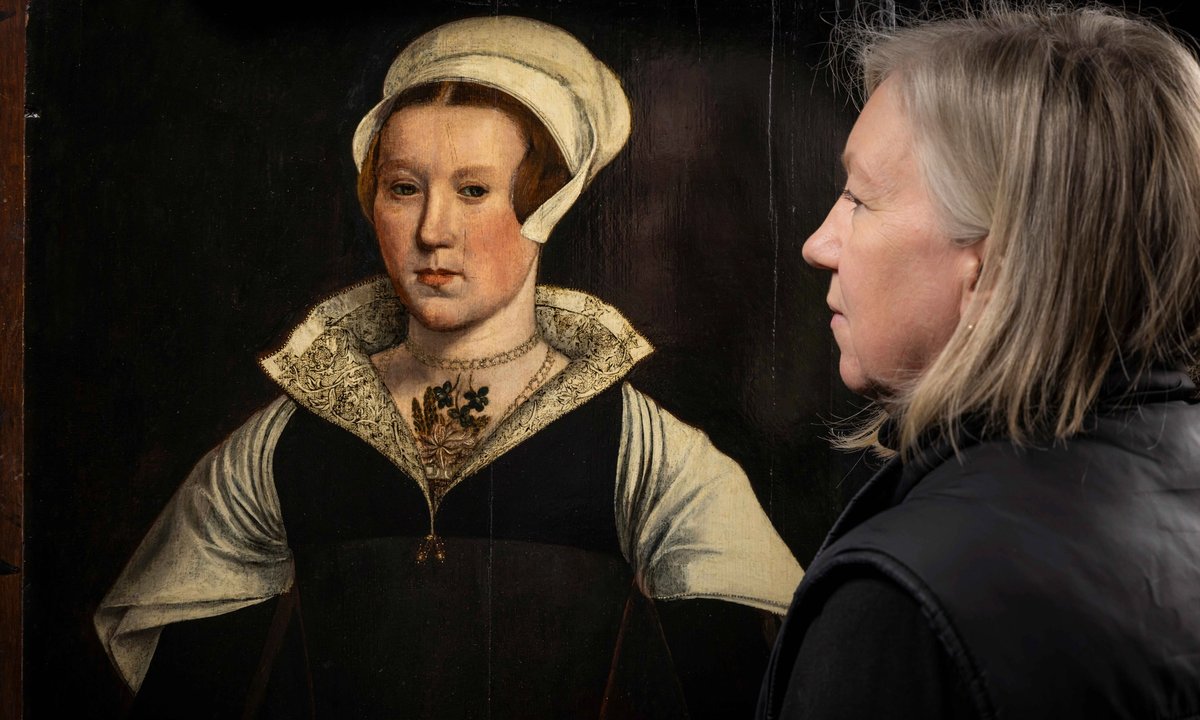For centuries, the story of Lady Jane Grey, England’s shortest-reigning queen who was executed at just 17, has been defined by her tragic brevity and the fact that no definitive portrait from her lifetime was thought to survive. However, a mysterious portrait, now on long-term loan to English Heritage and on display at Wrest Park in Bedfordshire, is challenging that historical gap. New analysis, including dendrochronology and infrared imaging, strongly supports the painting’s likely identification as Lady Jane Grey, revealing that its wood panel dates to her lifetime and that the image was subsequently altered to cast her as a Protestant martyr. The announcement of these findings, however, has sparked an internal debate in the art world, as the claim of this being a “new discovery” has been contested by art historians who first publicly exhibited the work and posited its identity nearly two decades ago.
Dating the Wood: A Breakthrough for Historical Authentication
The primary challenge in authenticating any portrait of Lady Jane Grey has always been the absence of works definitively created during her brief life (1537-1554). The ongoing analysis of the mysterious panel, now on loan to English Heritage, has provided the strongest material evidence yet that a contemporary depiction may indeed exist. The crucial breakthrough came from dendrochronological analysis—the study of tree rings—performed on the painted wood panel.

The painting is executed on two boards of Baltic oak sourced from two different trees. The dendrochronological results suggest a likely usage date for the wood panel between 1539 and circa 1571. This timeframe significantly overlaps with Lady Jane Grey’s lifetime, which is the key factor in establishing the portrait as potentially contemporary rather than a later confection or fanciful reconstruction. Further linking the painting to Tudor royalty is a merchant or cargo mark found on the back of the panel, a mark identified as identical to one used on a royal portrait of her cousin, King Edward VI (reigned 1547-1553), suggesting a possible link to the royal court’s network of materials and suppliers.
The Art Historian’s Challenge: A Twenty-Year-Old Claim
While English Heritage’s public announcement celebrated the findings as shedding “fresh light” on the sitter, it immediately drew a public rebuke from the art historian Bendor Grosvenor. Grosvenor, a regular columnist for The Art Newspaper, took to social media to point out that the portrait’s potential identity had been proposed and publicly exhibited nearly two decades prior.

In 2007, Grosvenor and the historian David Starkey featured the very same portrait in their London exhibition, Lost Faces, held at Philip Mould gallery. Grosvenor confirmed that as part of his original research, he had commissioned his own dendrochronological analysis of the portrait to confirm its likely date, which was the crucial step that allowed them to link the sitter to Lady Jane Grey. He expressed his surprise that the English Heritage press release suggested their research was “some kind of new discovery or conclusion,” though he ultimately voiced pleasure that the picture was finally receiving significant public fanfare and display, acknowledging the value of the new technological work.
Infrared Revelation: Alterations and Iconoclasm
Despite the controversy over intellectual credit, the new analysis published by English Heritage, particularly through the use of infrared reflectography, has undoubtedly provided novel and essential insights into the painting’s history. Infrared analysis allows curators to penetrate the upper layers of paint and reveal the underdrawing and any significant alterations made to the composition over time.
/https://tf-cmsv2-smithsonianmag-media.s3.amazonaws.com/filer_public/f4/6b/f46b7a04-c084-460f-8a41-5aa36bd468ed/paul_delaroche_-_ejecucion_de_lady_jane_grey_national_gallery_de_londres_1834.jpg)
The reflectography showed that the sitter’s costume had been significantly changed after the portrait’s initial completion. Curator Peter Moore of English Heritage confirmed that the sitter once wore a “more elaborate hood” and had “much wider sleeves,” with the possible inclusion of a stole or shawl. The figure now wears a simple linen cap, or ‘coif.’ This dramatic simplification suggests a purposeful revision, leading to the hypothesis that the portrait was subsequently altered to fit the public image of Jane Grey as a Protestant martyr. The less elaborate, plainer image would have been a visual symbol of her piety and humble sacrifice, serving the post-execution political agenda of those who championed the Protestant cause.
A Scarred Image: The Marks of Political Hatred
The turbulent political and religious environment of the mid-16th century, which ultimately led to Lady Jane Grey’s execution, is physically manifested on the surface of the portrait itself through deliberate damage. Infrared analysis revealed significant changes not only to the clothing but also to the sitter’s facial features. The eyes were originally painted looking to the right but were later changed to look to the sitter’s left, a striking correction that fundamentally altered her gaze.
Even more dramatically, at some point in its history, the eyes, mouth, and ears of the portrait were deliberately scratched out. This form of politically motivated vandalism is known as iconoclasm, and its presence on the portrait suggests that the artwork was at one time recognized as a symbol of the deposed Protestant monarch and was targeted by opponents—likely Catholic supporters during the reign of her successor, Mary I. Tellingly, an image of Lady Jane Grey housed in the National Portrait Gallery also bears these identical iconoclastic marks, providing a powerful, if grim, link between the two surviving representations and adding further credence to the identification of the sitter.




